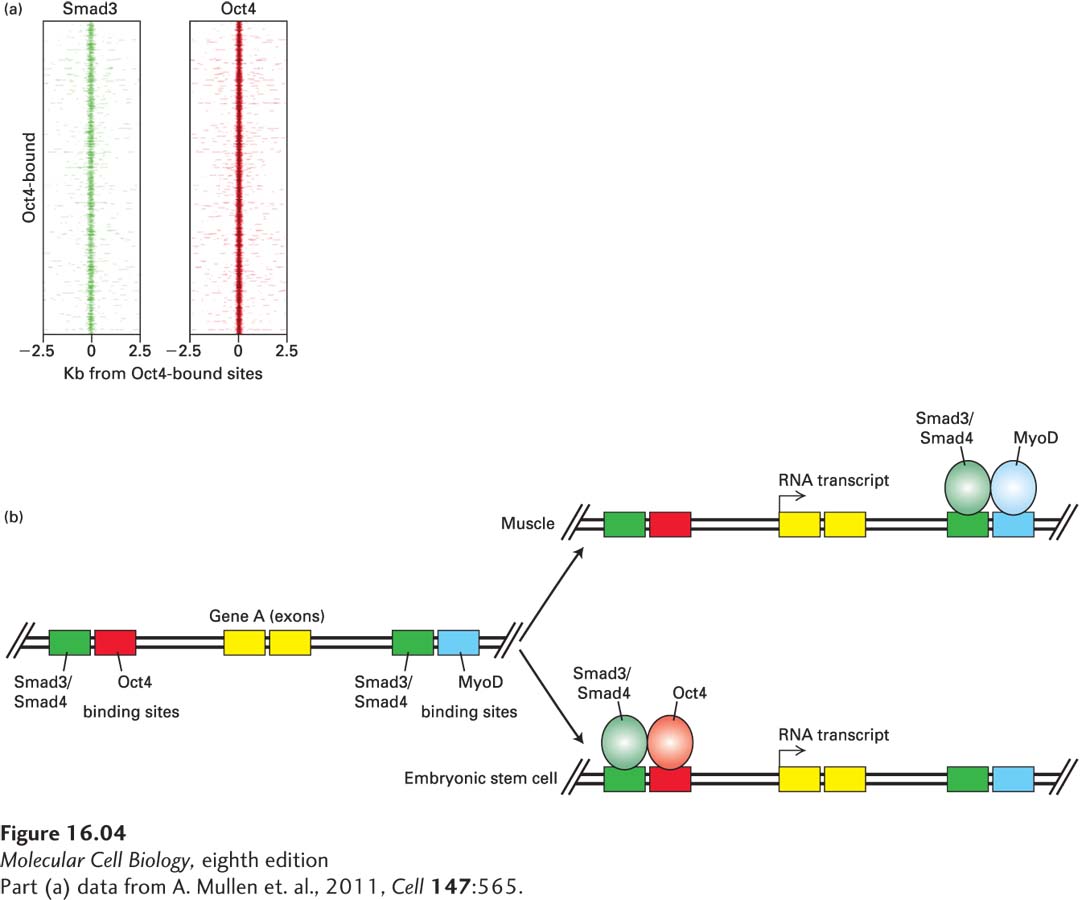
EXPERIMENTAL FIGURE 16- 4 The Smad3/Smad4 complex binds to DNA at sites adjacent to those occupied by cell- specific master transcription factors. (a) In human embryonic stem cells (ES cells), the Smad3/Smad4 complex binds at sites near those occupied by the ES master transcription factor Oct4. Chromatin immunoprecipitation studies were performed using antibodies specific for Smad3 or Oct4 and the DNA sequences bound to these factors were determined; this process is often abbreviated “ChIP- Seq.” Plotted on the y axis are the top 1000 sites bound by Oct4; the intensity of the red color is proportional to the amount of DNA at this site bound by Oct4 within 2500 bases upstream (−) or downstream (+) of this binding site. The left panel shows binding of Smad3 to DNA sequences within 2500 bases of these 1000 Oct4 sites; it is apparent that most of the Oct4 sites have Smad3 bound near them. Similar plots centered around the top 1000 Smad3 sites showed that over 80 percent of the sites with bound Smad3 also had a bound Oct4. (b) Smad3 can regulate the same gene in different cell types by binding to regulatory DNA sequences occupied by different cell- specific master transcription factors. In this hypothetical scenario, the Smad3/Smad4 complex (green) activates the same gene in ES cells and in muscle cells. In ES cells, it co- occupies a regulatory site with Oct4 (red, binding to a site in DNA colored red), and in muscle, it co- occupies a different regulatory site with the muscle master transcriptional regulator, MyoD (blue).
[Part (a) data from A. Mullen et al., 2011, Cell 147:565.]
[Leave] [Close]